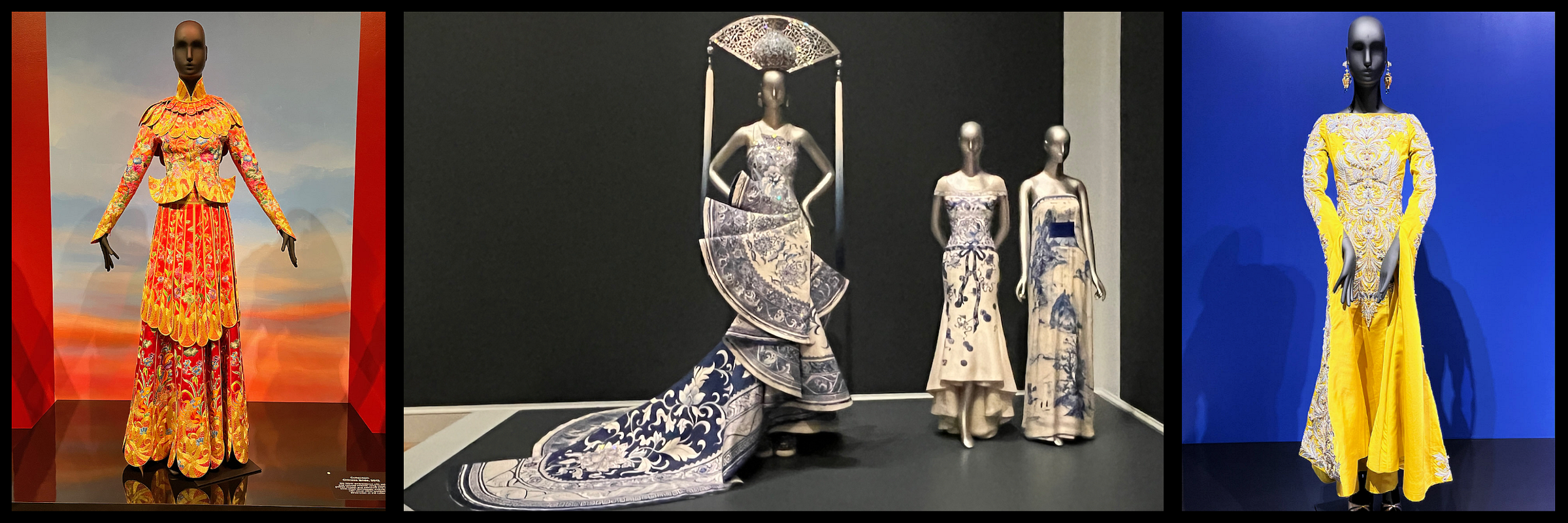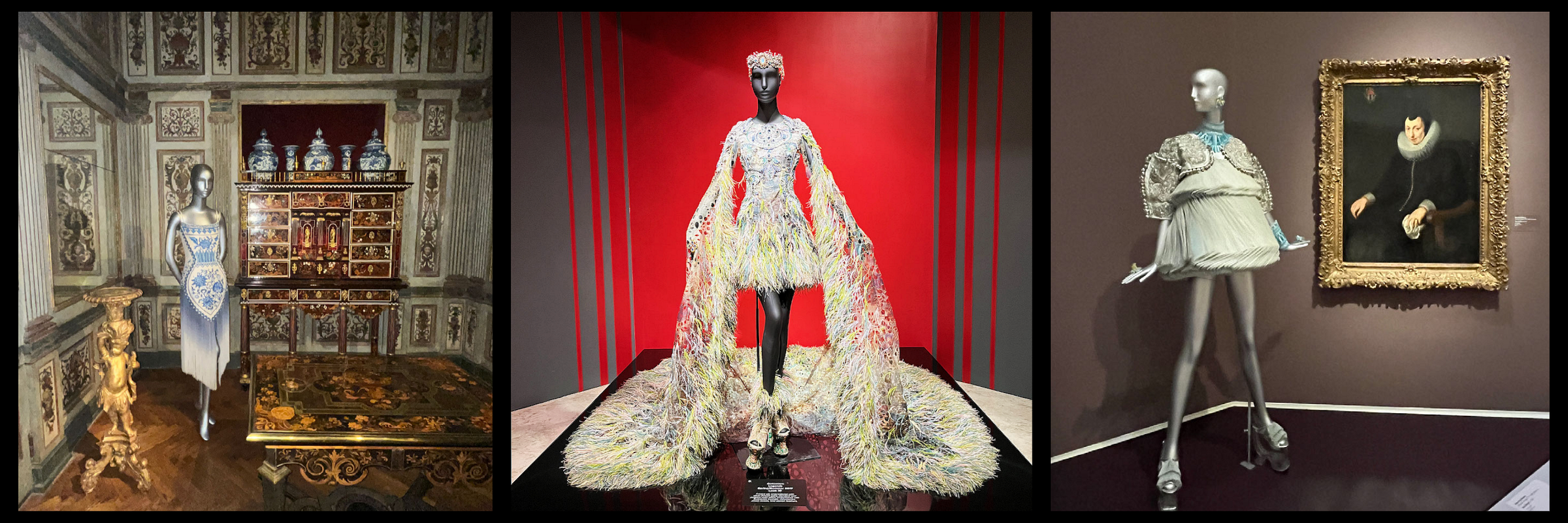The Cultural Revolution forced Guo Pei to become a Renaissance woman
The results of her determination to recover China's traditional crafts, and to renew them by drawing on global influences, are extraordinary.
My latest article, published in American Purpose magazine, is on the extraordinary artistry of Chinese couturier Guo Pei and what it tells us about art, cultural synthesis, and historical legacies. To give a greater sense of her work, I’m using this post to include some photos I took at the exhibits that inspired the article. Here’s its opening:
On the first Monday in May 2015, Rihanna arrived at the annual gala hosted by the Metropolitan Museum of Art’s Costume Institute in an outfit that created a global sensation. Even for the Met ball, it was extraordinary: a yellow silk cape embroidered in silver and gold, with a lavish collar of fox fur dyed to match. The train stretched sixteen feet and required three attendants to arrange it for photos. Dubbed the “Yellow Empress” by its designer Guo Pei and “the omelette dress” by internet memes, the cape weighed fifty-five pounds. Unlike the model who had shakily walked Guo’s creation down a Chinese runway, Rihanna pulled it off with apparent ease. “Only women who have the confidence of a queen could wear it,” says the designer.
The image of Rihanna in Guo’s creation now seems like a relic from the twilight of a lost time: a sloe-eyed beauty with café au lait skin wearing robes in the color once reserved for Chinese emperors—robes designed by a modern woman steeped in Chinese culture and eager to learn from the world. The increasing estrangement between China and the West, the turning inward of countries including the United States, and tribalist taboos against appropriation make such moments rarer now. But for a time, cultural synthesis seemed like the future. Walls had tumbled and empires receded. Global communication, travel, and exchange were merging the world’s most fertile minds into the first world civilization. High and low, art and science, culture and commerce, East and West—all, it seemed, could flourish in a common human enterprise. Anyone’s heritage could be a font of creativity, every culture honored and shared. No one had a monopoly on excellence or its benefits.
That was the world that gave us Guo Pei, China’s most acclaimed couturier.

Guo developed her art without formal training beyond the basics of making everyday apparel. She studied high-end design from books and later from museums. She thus avoided the ideological assumptions that Western students pick up in design schools. She also came of age when China was opening to the world. With the backing of her husband and business partner Cao Bao Jie, a Taiwanese textile importer who goes by Jack, she built her business before the political tightening under Xi Jinping, affording her artistic freedom. She was free to pursue her personal ideals of beauty and strength, constrained only by the need to find paying customers.
The cultural confidence of Guo’s outsider perspective represents something greater than a single woman’s work. She forces Western audiences to reconsider supposedly enlightened assumptions from the outside. Her art challenges three convictions that increasingly shape—and cripple—fashion, art, and culture in the West.
The first is that comfort, whether physical or psychological, is paramount. As Rihanna’s cape demonstrates, Guo rejects this idea. “I use the weight of the clothes, the height of the shoes, and the unwieldiness of the dress to represent the inner strength and confidence of a woman,” she says. Her runway clothes aren’t designed for daily wear, of course, but their spirit is. In Guo’s art, the most powerful individuals are those who meet challenges with apparent ease. They don’t cower, wobble, or complain. Her opulent luxury is anti-decadent.

The second notion is that adopting motifs from other cultures, particularly religious symbolism taken out of context, constitutes an insult or an outright crime. Among Western gatekeepers, “cultural appropriation” is a sure ticket to controversy and possible cancellation. By looking at Western motifs through foreign eyes, Guo shows how essential such appropriation is to artistic advancement and demonstrates the way an artist can honor the beauty of cultural artifacts without adopting their traditional meanings.
Finally, there is the belief that the crimes of the past negate its accomplishments. To overcome historical evils, zealots condemn the perpetrators’ achievements along with their sins. Guo grew up in a China that had taken this path, and she has emphatically turned against it, valuing excellence from imperial culture without wanting to return to it.

Read the rest at American Purpose magazine.
Comings and Goings
This Sunday I will be selling and signing The Fabric of Civilization at the annual Weaving and Fiber Festival (WeFF), sponsored by the Southern California Handweavers’ Guild, at Torrance Cultural Arts Center. Admission and parking are free and the festival is open from 10 to 4. I’ll be in the Members’ Boutique, also working as a cashier. (If you would like to purchase one of my other books, send me an email at vp@vpostrel.com or by hitting “reply” if you received this by email, and I will bring it as well.) For more details on WeFF, check out this link.
I’ll be in London May 23-28. I’m still working out my schedule, so please let me know if you have anything in mind for me. You can comment below or email me.




